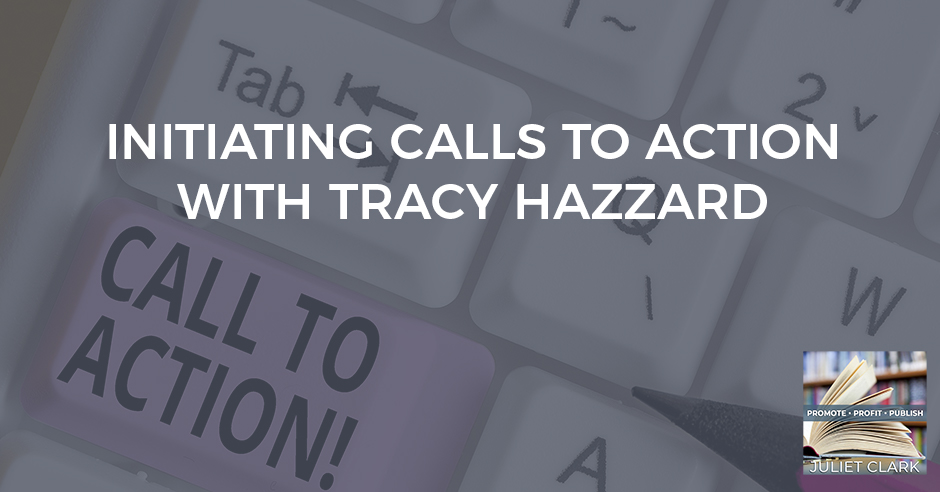
For every content creator out there, initiating calls to action is a bread-and-butter skill, but people still have many misconceptions about how to go about doing so. For something that might seem so simple on the surface, there are so many things to consider. Juliet Clark sits down with Tracy Hazzard, founder and Chief Financial Officer at Podetize, to chat all about initiating calls to action as organically and effectively as possible. There are so many ways to do a call to action, but some ways are just more inherently effective than others. Let Tracy teach you the best ways to go about this deceptively difficult skill.
—
Watch the episode here
Initiating Calls To Action With Tracy Hazzard
We are going to talk about CTAs.
Finally, calls to action. We keep saying that we want to brief up your copy. We want to get your visuals there. We’re doing all of those things as we talk about what’s working and what’s not working in marketing. The most important thing is having a call to action and making one.
We’re going to do a call to action at the end, but I wanted to talk about the different kinds of calls to action too because there are commitments and then there are micro-commitment calls to actions.
The type of call to action you do, needs to also be matched to all the things we’ve been talking about, whether it’s the tone of your copy, the visual impact you’re trying to have or the temperature of the audience we’ve talked about before. All of those things have to also match your call to action. That’s where people go wrong. They think I’m going to give them this power call to action and everyone’s just going to go and jump on it. Often it doesn’t work out like that. What did you want? You write a lot more calls to action than I do. What are some of the things that you see go wrong, Juliet?
Getting into the call to action without doing any prep for it. They’re saying buy my stuff but there’s no prep or there’s no real good copy telling them why they should buy your stuff. What’s in it for them? We all know there’s money in it for you most of the time. There’s a lot of that. A lot of the call to action to get somebody to click requires trust. You want the right people trusting you. That’s where I talk a lot about commitments and micro-commitments. Let me explain about the two. A commitment is when you put something out there. Let’s say it’s an eBook or something where you’re going to end up if you click on somebody’s list or in an offer. If somebody doesn’t know, like and trust you, that’s a big step because now they know they’re going to get spammed to death by most people.
I always recommend that you use a big commitment and then a micro-commitment, something non-threatening like a Facebook group. You can have your call to action and then put something underneath it that’s like, “Not quite ready to grab our eBook? Come join the Facebook group and find out more about what we do.” That gives those new people a place to go where they can be a lurker on Facebook. I had someone come up to me and he’s like, “I love your stuff on Facebook.” I’m like, “Why don’t you ever like it?” He’s like, “I just sit there and lurk.” Now he makes comments, he likes and he shares. I guess I shamed him. The next step was like Game of Thrones where we throw things at him as he walks through the townsquare yelling, “Shame.” What about you? What do you think are good CTAs?
Getting somebody to respond to a call to action requires a lot of trust. Share on XWhat I find is most often, the CTA or the calls to action I see are a complete mismatch. Your audience is a low-end. They’re starters and beginners. They’re dipping their toe in and we make them high-end offers. There’s this big mismatch between how you do it. I agree with you totally. You have to have your offers build up trust over time. We go with these mismatched to our audience. In our bootcamps, we make a reversal of offers. Normally, you would lead up to the high-end ticket and we do it in reverse, but we do it abruptly. There’s a reverse psychology reason for it. We do it on purpose in that particular place, but we’ve already built up a ton of trust before they ever get to our bootcamp to begin with.
They wouldn’t be there if we hadn’t been giving them value over time. We’re on probably our 10th or 12th touch point by the time they are enrolling in our bootcamp. We’re allowed at that point to do a reversal. In our bootcamp, we do our morning and we set through. It’s a seven-hour bootcamp on how to start a podcast. We set the whole morning with the tone of what a strategy is, how to name your show, thinking through all the do’s and don’ts, the things that most people do wrong. For some people who have come in there with a mindset of, “I have my show idea already.” There’s a lot of this, “I’ve done it wrong already,” like they’ve already gone wrong.
Now they’re worried. What we do is we hit them right at the end of the morning. If you want one-on-one, if you want strategy, if you don’t want to watch the rest of the seven hours and you want to get this done quickly with the most one-on-one help possible, then let’s have a conversation. We have our call. We have our Podetize.com/inquiry. It’s this booking calendar. It’s not even telling them how much it is, but it is essentially our high-end sales opportunity because you’re going to get a one-on-one evaluation and you’re going to have a sale. You’re essentially agreeing to a sales call. In that, Tom has a high track record of selling people because they’ve already had the groundwork set here.
They’ve been thinking about podcasting for a while. That’s why they’re taking the bootcamp. They’ve seen us add value over time and now we jolted them out about how much work this is and it’s not what they expected, but they still are excited about doing a show, so let’s get it done quickly. I’m making an offer that says, “I’m making an offer to skip all this how-to stuff that you don’t want to do. Because you value your time more than you value money.” That’s basically the offer. Normally people would go through the entire day and then make the offer. My clients are quick. They want quick results. They want to move fast. I know that because I know my right fit clients well and they don’t have the patience to sit through how-to if they’re never going to do it. They don’t want to learn just to learn. They want to get moving. I’ve given them an out. I gave them what they needed to be valuable so that they could make an informed decision about how their show should go on the strategy things.
I’ve jumped started what I normally would do in my first paid call with them. We’re going to move faster through that whole process when we do it. I’ve given them an out right there. Later in the day, we make the second offer which is, “Now that we’ve taught you all the things you need and you’ve made decisions about what you want this to sound like, look like and do it, but you don’t want to go all over the place like Fiverr and all these other places to go buy this stuff. Why don’t you use my resources and I’m going to make you an amazing offer?” I make them $1,000 offer.
On the last hour, I make them an offer to get free 30 days on my Podetize platform. They’ll join us as soon as possible to take advantage of our ongoing coaching, which means I continue to have more touch points and opportunities to sell them and to envelop them in our community where they all rave about us. That helps as well too and moves them through the process. I’ve done it in reverse. Normally, people would go and make their free 30-day offer right at the beginning. That’s what they would do. They’d do it in reverse. I’m not doing it as my first touch point. If I went in and said to my first touchpoint, “Go and have a call for something that’s going to end up being a $7,500 offer,” they’re not going to do it. They’re not going to have the call even if they were the right fit.
I wanted to find that really quick. When she says touchpoint, they’ve talked before, there’s been an email exchange, there have been several touch points and people are interested. That is important. That’s one of the places where we talked about on the very first show, waste of time webinars. People are not interested in watching an hour and a half training and that big thing anymore. Having a masterclass or a bootcamp, something where people can get a taste of you for $197. I think yours is $97, isn’t it?
Mine’s $497 but very often I give it away for $97. That will be my stage offer to someone. It is one of my touch points. It’s one of my giveaways and lowering costs. Sometimes I even give it away for free. To me, my goal is I want the people who are going to drop out of that bootcamp. The bootcamp is there. If you want it and you want to use it, good for you, go for it. My goal is to capture the people who want to crash out of it and say, “Enough is enough.” I’m offering them the opportunities to crash out of it all along the way. This is what I think the mindset is. A call to action is an opportunity. It’s not sales. It’s a single action. It’s not the be all and end all. It’s not like, “I’ve got to cram it all in and tell them everything.” Get them to do one thing.
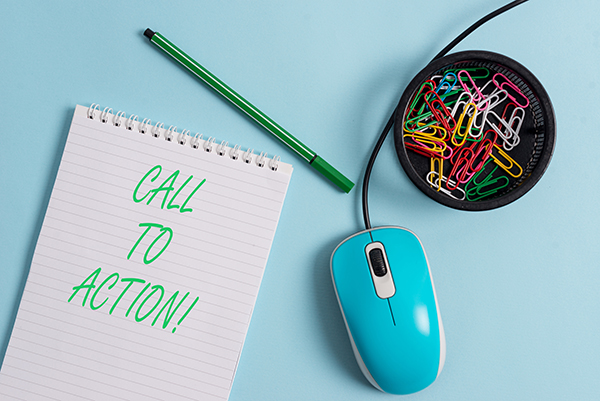
Initiating Calls To Action: The type of call action you do should be dependent on the tone or impact you’re going for.
The difference between you and I and a lot of other people out there is we have a tangible product that we can do as a done-for-you. For those coaches out there who your thing is coaching, that’s the difference here between what we’re doing. Tracy has it done-for-you where they set up the podcast. I’ve had done-for-you where you set up the assessment. There are some places where that model may not work the way it works for us because that down sell is something tangible that you’re taking away from the deal.
If that’s the case, if you don’t have a product, if you don’t have that service package where they’re receiving something of value. When I used to have my consulting business, it would take me a very long time to close clients. I was closing them for $120,000 a year program. You’d expect to have a longer cycle of closure. Along the way, in that process, your calls to action are to get them to provide you information. You treat your calls to action as a test to see if they’re going to be a right fit client for you. One of the things that I refuse to do when I have interactions with people out in public is that I don’t send them information. When they push a card in my hand, I don’t do anything with it besides friend them on LinkedIn.
I make them ask me for information or I will give them a card that says go to this address and book a call. I make them take the action of booking and that’s my choice. I’ve done that through that whole consulting business because if they weren’t willing to take that action, then they weren’t going to be great fit clients for me. Finding that call to action thing that makes it so that when they do that, it’s an indicator that they are a right fit for you. That’s where sometimes our calls to action making these free downloads and all of these things, we get all the wrong people through it. That’s where we’re not working out well. I want to see actions that make that a better fit for me. I want to help qualify my audience. That’s why I love the quiz as a call to action in certain situations. That’s where it’s wonderful with what you do with your assessment marketing.
I want to point out something and we’ve got to do a whole episode on enrollment conversation. What Tracy just did there is like dating. You never chase the guy. You never chase the client. It’s the same thing. She’s playing hard to get. It’s not really hard to get but you’re standing back to see if this is your person. That can be empowering because it’s frustrating when you are chasing clients who aren’t qualified. You’re talking to people all day, especially when you’re a solopreneur. You’re unclogging the toilet and you’re responsible for every single thing in your business.
Did that happen now? That sounds personal.
It did not happen now, but I worked at a place for a while where I was the CFO. I’m telling you, the CFO and the COO, we did everything because we were too cheap to call a plumber. Small business is you’re wearing all the hats. When you’re enrolling and selling, you need to be talking to qualified people. It’s very empowering. If you’ve ever been a salesperson like a telemarketing person, you’re calling and people are hanging up. You don’t want that. It’s hard. You want those people coming to you and saying, “Could we chat about this?”
The other part about it that I don’t love and I studied the sales process of getting everybody to dance to the back of the room, run into the back of the room, however you want to call that. What I found in that process is that you get a lot of frogs still in that process. There’s a lot of dissatisfaction. A lot of people who buy too many programs don’t take action. I would rather have a smaller set of people but have them be the right people. I never create a call to action from the stage or anything that’s forcing them to take an action besides buy right there with me. They can always do that and the ones that are ready will do that because they will have heard exactly what they need.
I have times where Tom will be like, “I’ve got three bookings on my calendar. What did you do?” “I gave a talk and I mentioned your booking link.” He’s like, “Okay, great.” Those people take action before I’m even off the stage. You know that’s going to happen. I know that’s going to happen. How do I warm up the rest of them while I require them to do some things? A lot of times, I’ll use the quiz and make them go through the process. I’ll offer them the free bootcamp because I know if they even go to it and register for it. Even if they don’t take it yet, that’s a step I want to know that they’ve taken. They’ve expressed enough interest in it. That’s why I do some of the things the way that I do it. At the end of the day, I like to inject out in my calls to action and what I do. It’s not even that I want them to think this is the way we operate, that not everybody is right for us. There’s a segment of people who are going to be wrong for this.
Here’s the other thing. Here’s my test at the back of the room because I’m thoroughly disgusted by them. You know this because you were there when I did it. The only program that I bought was Aaron Young’s because I walked to the back of the room and I said, “I’m skeptical. Will this still be available to me next month?” They said, “Yes.” To me that’s the test of a credible, “I’m not trying to hype you. I’m not trying to get you to close now. Let’s continue the conversation and build a little trust type of thing.” That’s the only reason. I don’t ever run to the back of the room anymore and I don’t do offers to run you to the back of the room because I also find from that that you get a lot of people who are all in. You got their credit card and then they charge you back or they don’t keep up on their payments. Because in the heat of the moment, they committed to something that they couldn’t afford and didn’t need. By the way, when she says about all these programs, I talked to someone that told me that they’re in nine different coaching programs. There are probably nine different people telling you nine different ways to do it.
A call to action is an opportunity. It's not sales. Share on XWe don’t even like to get in someone who’s still in web development because we know there’s going to be a conflict with whoever is advising them on their website. I’m like, “Come back to us when your website’s done.” Because we have too many people who get started and they’ll be like, “I want to get started.” I’ll be like, “At the end of the day, your website’s going to be the thing that holds you up. I’m going to tell you that and you’re going to get all frustrated with me. It’s not going to work out. Good luck with that. Call me when it’s done and we’ll get you started right away.” We had the same problem again and again with people and they’re over-coached and it’s so scary. They don’t make progress with the over coaching. It’s so dangerous.
Calls to action, is there anything on your website that has pricing? I have very little pricing these days. It’s schedule an appointment, let’s find out where you’re at and let’s chat. What about you?
We do but we didn’t before. We do because of the stage that we’re at. We get a lot of people who buy and renew their packages over the website and podcasters who just transitioned to us. That’s why we have that there. For setups and other things like that, no. Almost 99% of them come through a call first for a setup or a launch of a new one. Transitions can come over and anyone who buys hosting needs only $49 a month. For them, there’s no point in having phone calls for that. Most of them will buy at the site. It’s different now but we’re at a different stage because of how big we are right now.
With the exception of the bootcamp, I don’t think there’s anything you can click and buy over there. It’s because I’m a snob, but most of it is because it’s not just you evaluating me. It’s me evaluating you to find out. If people are going through your program from that CTA, they’re just clicking and they’re not successful, they’re never going to take personal responsibility. It’s going to be all your fault and they’re going to be out telling everybody how you suck when they didn’t show up, so I want to find out that you’re an action taker.
Our biggest problem comes from those that are referred to us by marketing agencies or groups of people who are coaching them to become podcasters. Those are the biggest problems who come over to us because their expectations are not set. They’re also being sold something else like some mastermind and some other programs. Their energy isn’t all in where we need them to be. That’s why we are cautious about those companies and who we work with over there. We screen the company more than we screen the podcasters to we get the right fit ones. You can’t be a network on our network unless you’ve gone through our program with us.
Let’s set some expectations here. There is no magic bullet. All of this takes time. If somebody tells you different than that, run.
The one thing that I wouldn’t want to say that to people is that failure to make a call to action is a big problem too. Some never make a call to action. They have all this content and all this stuff and they never say, “Here’s how to reach me.” I was accused of that early on. It was like, “What is it that you’re selling? I want it.” I’d be like, “Did I blow my sale? How did I mess that up so bad?” That was early on. That was when I decided to get help with sales training. I decided to get my presentation skills, figure out how to sell from stage because I missed something in the scope of things. I serve them and they wanted to work with me, but I didn’t tell them what it was because I was trying to be more in service and I was trying to be in sales. I had to find that middle ground. Calls to action are extremely important and the clarity of them, why you’re giving them and not confusing them by making too many of them like we’ll do multi-tiered ones, especially in a stage talk.
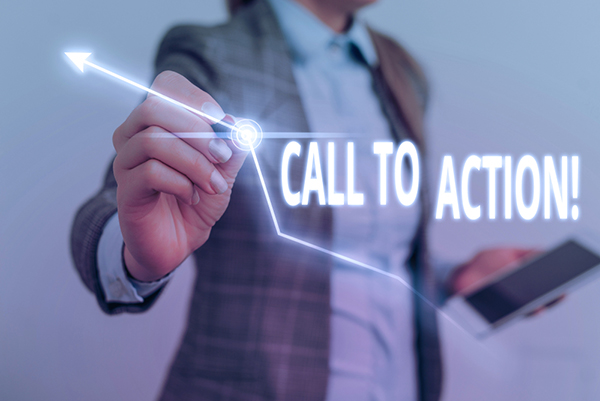
Initiating Calls To Action: Calls to action are extremely important and the clarity of why you’re giving them, not confusing people by making too many.
We saw somebody do that very successfully. Merrill Chandler had a three-tier and extremely powerful and good. He’s also a master from the stage. With his energy, people are engaged and ready to go. If you’re a mediocre speaker, one CTA.
The thing is having multiple CTAs, you’ll find over time as you do it, that people want to have a comparison. They want to say, “I have a low, mid, high.” We used to do this in our consumer product. We always had to have file cabinets. You had to have the cheapy file cabinet, the mid-grid file cabinet and the high-end file cabinet so that there would be a good, better, best comparison. That’s a way of doing things. It’s a way of selling things. It’s a way of comparing it. You’re always driving them into the middle because the middle is where you make the most profit and where you do the highest volume. Your low-end is not making you money. It’s your loss leader. Your high-end is you make great money and it’s wonderful, but so few people buy it. It’s almost not worth maintaining the skew. That’s what happens at the end of the day.
Thinking about that, that’s where I see also go wrong when somebody tries to do a multi-tiered. They don’t even realize that two of them aren’t even desirable. They might as well go straight for the one that has the most resonance and the best profitability to what you do best in your business. That’s what I say, “I’ve got this free thing if you want it. Here it is. It’s here for you. My push is book a call because if you’re the right person for the book a call, that’s my most profitable. It’s also where I can serve you the best. I know you’re going to get the most value out of it.” Living in that opportunity that you’re providing that makes the best calls to action at the end of the day.
I do something similar. I don’t have a lot of levels because I do 1 or 2 things well and I don’t add to it. As part of that, I can customize that a little bit. That’s why the call is important. I can give you a few extra sessions or we can do some additional messaging. Mine’s a little bit different because people come in at many different stages.
We’re going to do a simple call to action because Juliet and I are all about making sure that you get massive growth in your marketing. We want to give you an opportunity to talk with us by putting in our Marketing Monday Mixer Facebook group your biggest marketing challenges. Tell us what your biggest marketing challenge is in the Facebook group and we are going to start structuring around that. Because we want to make sure that we’re bringing you the best value that can serve you well to increase your marketing conversions. At the end of the day, that’s what we want. We want marketing that’s effective and we want to do away with the stuff that doesn’t work anymore.
Go to the Marketing Monday Mixer Facebook page. When you like it, if you haven’t already, go up to the call to action at the top of the page and hit it. It will take you right into the Facebook group. Tracy’s going to post in there so that you can see where to show us your biggest obstacle. We will start going at it. We might ask you some additional information about it so we can zero in on what it is you need. We’re planning the 2020 episodes. Go over and like the Facebook page and get in the group and tell us all about what you want us to talk about. I will dig up some yummy recipes from Chef Marie, who will be here on the show as well. We are going to talk about next the tone of your marketing, which is important. We’re going to have a wonderful coffee recipe from Chef Marie. Thank you for joining us. Go over, answer and let us know what’s going on for you.
Your biggest marketing challenge for 2020, we want to hear all about it. That is our call to action. It’s simple, easy and keeping our connections with you.
On that note, bye and have a great week.
Important Links
- Podetize.com/inquiry
- Podetize
- Marketing Monday Mixer Facebook group
About Tracy Hazzard

Innovation Columnist, Multi-awarded Designer & Product Strategist for Hazz Design, Tracy has worked with leading brands like Herman Miller, and Martha Stewart Living among others throughout the years. Her rich professional experience has given her the expertise and genuine pulse to know what clients want and how brands can promote with purpose.
Tracy delights in the privilege to be able talk about things she is passionate about, and deeply appreciates exchanging viewpoints during interviews with interesting people every day on podcasts she co-hosts (Product Launch Hazzards, WTFFF?! 3D Printing) with her husband and business partner, Tom.
On top of being at the height of her career, she is a mom to three girls and is a voracious reader with a current all-time record of finishing 300 books in one year.
Love the show? Subscribe, rate, review, and share!
- superbrandpublishing.com
- Promote, Profit, Publish on YouTube
- Follow Juliet on LinkedIn
- Take the Quiz!

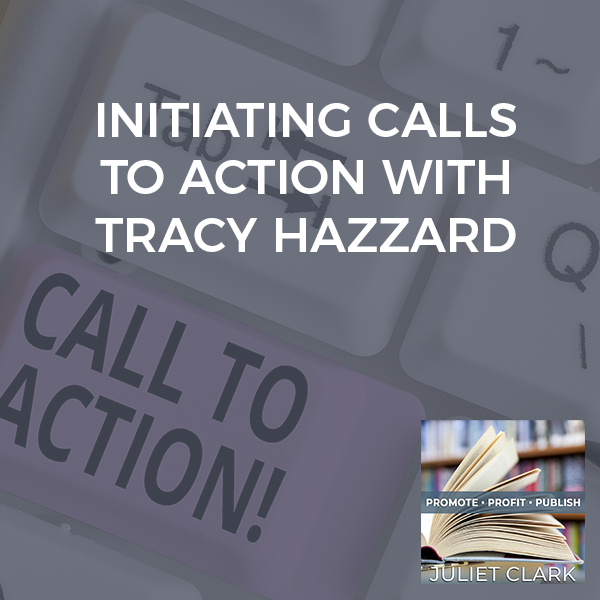


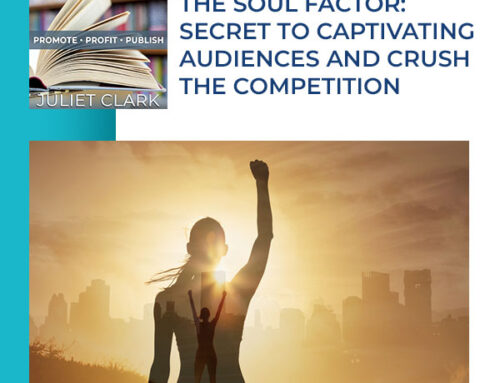
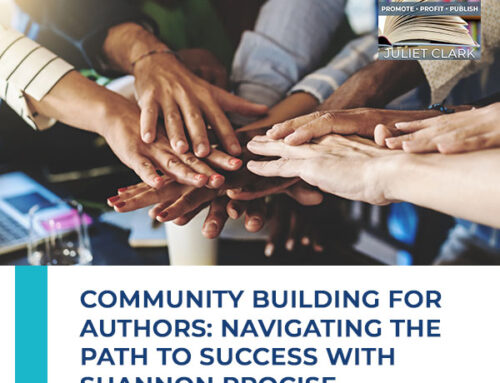



Leave A Comment